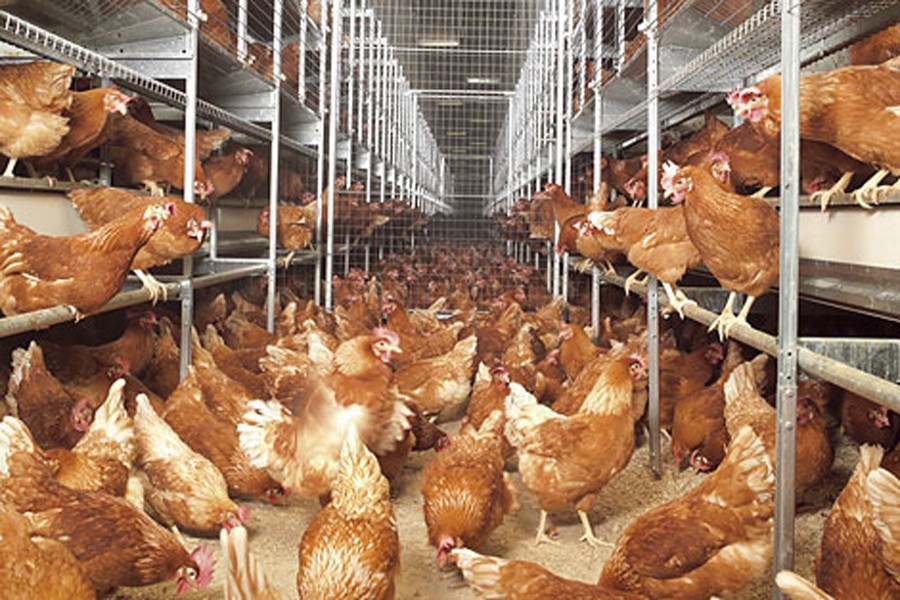For poultry and livestock, certain mineral elements such as iron, manganese, lead, copper and zinc are used as dietary nutrients. However, all mineral elements, whether considered essential or potentially toxic, can have an adverse effect on human beings and animals in the event of excessively high concentrations of any of the minerals in a diet. Moreover, any feed laced with those very toxic minerals can have an adverse effect on kidney, liver and, to a lesser extent, the muscle of human beings. To maintain the food chain safe from heavy metals and avert subsequent consequences, it is necessary to maintain the standards of presence of heavy metals in poultry feeds in Bangladesh.
Poultry and livestock feed: Poultry and livestock feed is the diet for farm poultry and livestock, including chickens, ducks, cattle and other domestic birds and animals.
Over the last decade poultry has emerged as a very popular and promising sector in Bangladesh. A large section of people in Bangladesh consume poultry meat and eggs to meet their protein need. Different feeds give different results in terms of growth and egg production. To attain the exact quantities of nutrients, it is important to balance the diets.
In Bangladesh the situation of feed is not good enough in the perspective of quality because of the seasonal variation of local feed ingredients and metal pollution around the feed industry.
However, the quality of feed is the main determinant factor in successful poultry farming. In addition, heavy metals in broiler feed are a serious problem because of their toxicity, bioaccumulation and bio-magnifications in the food chain. These contaminants often have direct physiological toxic impacts, because they can be accumulated in body tissues and released in litter.
In Bangladesh, the tannery, ceramic, textile dyeing and sulfuric acid producing industrial sites are especially associated with heavy metals pollution and sometimes contaminate poultry feed. The raw materials available for production of poultry feed are of various origins. The exposure of these sources to various anthropogenic pollutants, especially the heavy metals, may affect our food chain through the feed.
Lead is a very toxic metal harmful to both animals and human beings. In addition, lead is a nonessential nutrient that causes a concern over human and livestock health and may accumulate in the body, particularly in the kidney, liver and, to a lesser extent, in the muscle.
Moreover, continuous exposure to a toxin causes poultry birds' muscles to rot, gradually damaging limbs and liver. The toxin enters human body through the consumption of infected poultry meat or eggs. The toxin cannot be entirely destroyed, even if the infected food is cooked at 150 degrees Celsius for 30 minutes. The toxin will get to the liver and a continuous exposure to it will cause liver cancer.
Digestive system of poultry: The digestive system of poultry is quite different from other animals as they lack teeth. The major parts are crop (an extension of the oesophagus). This is followed by the proventriculus which is the glandular stomach and the gizzard, the muscular stomach. Digestive enzymes and acids are produced in the former while the latter mechanically grinds the food. Addition of grit in poultry feeds further helps in digestion as they may be present in the gizzard.
Nutrients in feed: The major nutrients in feed include water, proteins, carbohydrate, fat and oil, minerals, vitamins and feed additives. Their utilisation varies with the digestibility of the nutrients and bio-availability for metabolism.
Non-nutritional poultry feed: There are certain compounds that can be added to poultry feed for their special significance. These are antibiotics, arsenicals, drugs, hormones, antioxidants, antifungals, flavouring agents, pellet binders like sodium bentonite, pigments, enzymes and probiotics. The other additives that can be added are preservatives, emulsifiers and stabilisers, food colours, flavours, anti-caking agents, acids, buffers and bases, firming and crisping agents, tannery and other waste and sweeteners.
Home-mixed ration/organic diet: Poultry feed ingredients include energy concentrates such as corn, oats, wheat, barley, sorghum and milling by-products. Protein concentrates include soybean meal and other oilseed meals (peanut, sesame, safflower, sunflower and so on), cottonseed meal, animal protein sources (meat and bone meal, dried whey, fish meal and so on), grain legumes such as dry beans and field peas. Grains are usually ground to improve digestibility.
To keep the food chain safe from heavy metals, it is necessary to monitor and maintain the quality of poultry feed. Therefore, proper processing and treatment need to be ensured to improve the quality of the commercial poultry feed available in Bangladesh.
The writer is Assistant Professor at Bangabandhu Sheikh Mujibur Rahman Science and Technology University, Gopalganj, Bangladesh.
Email: [email protected]


